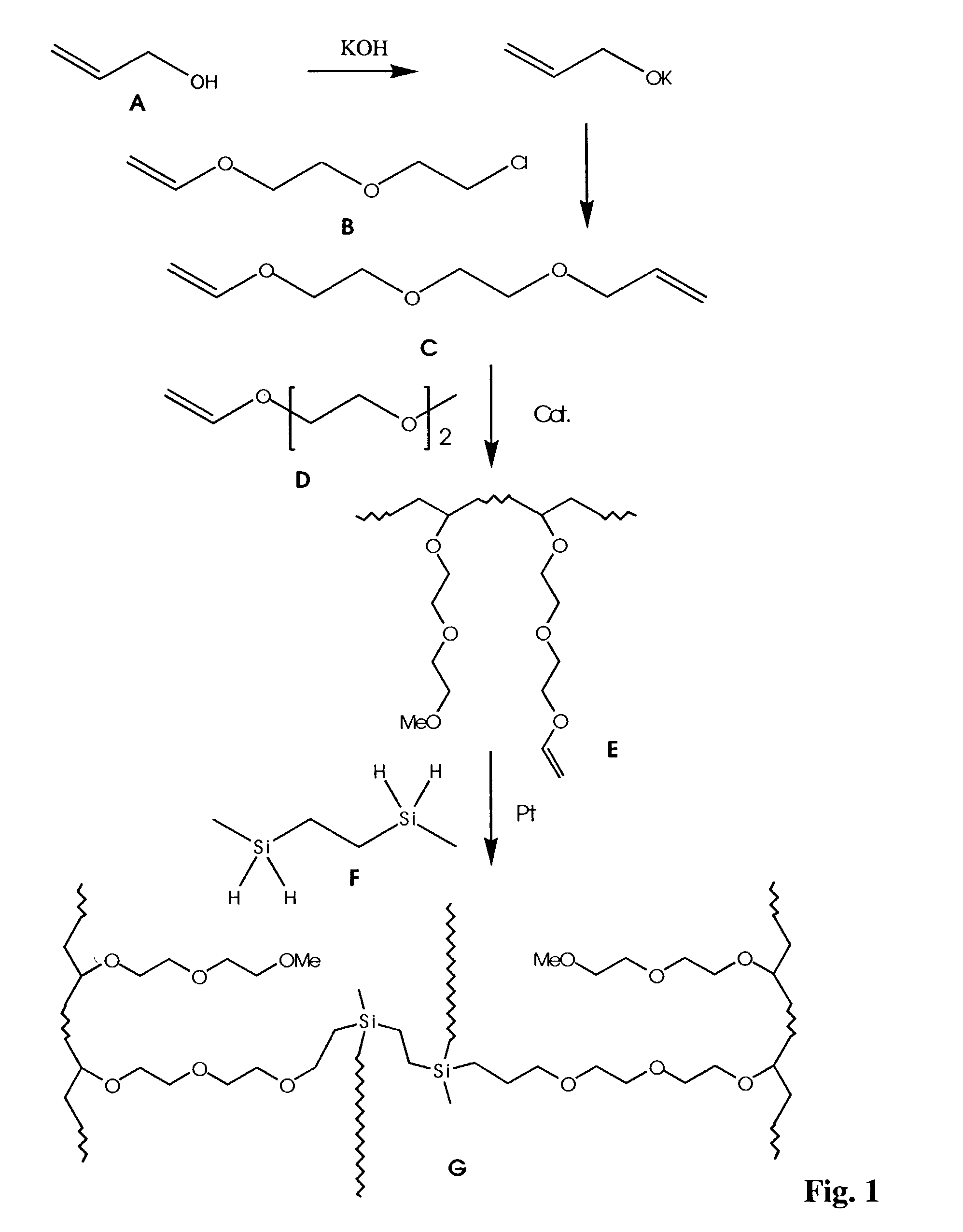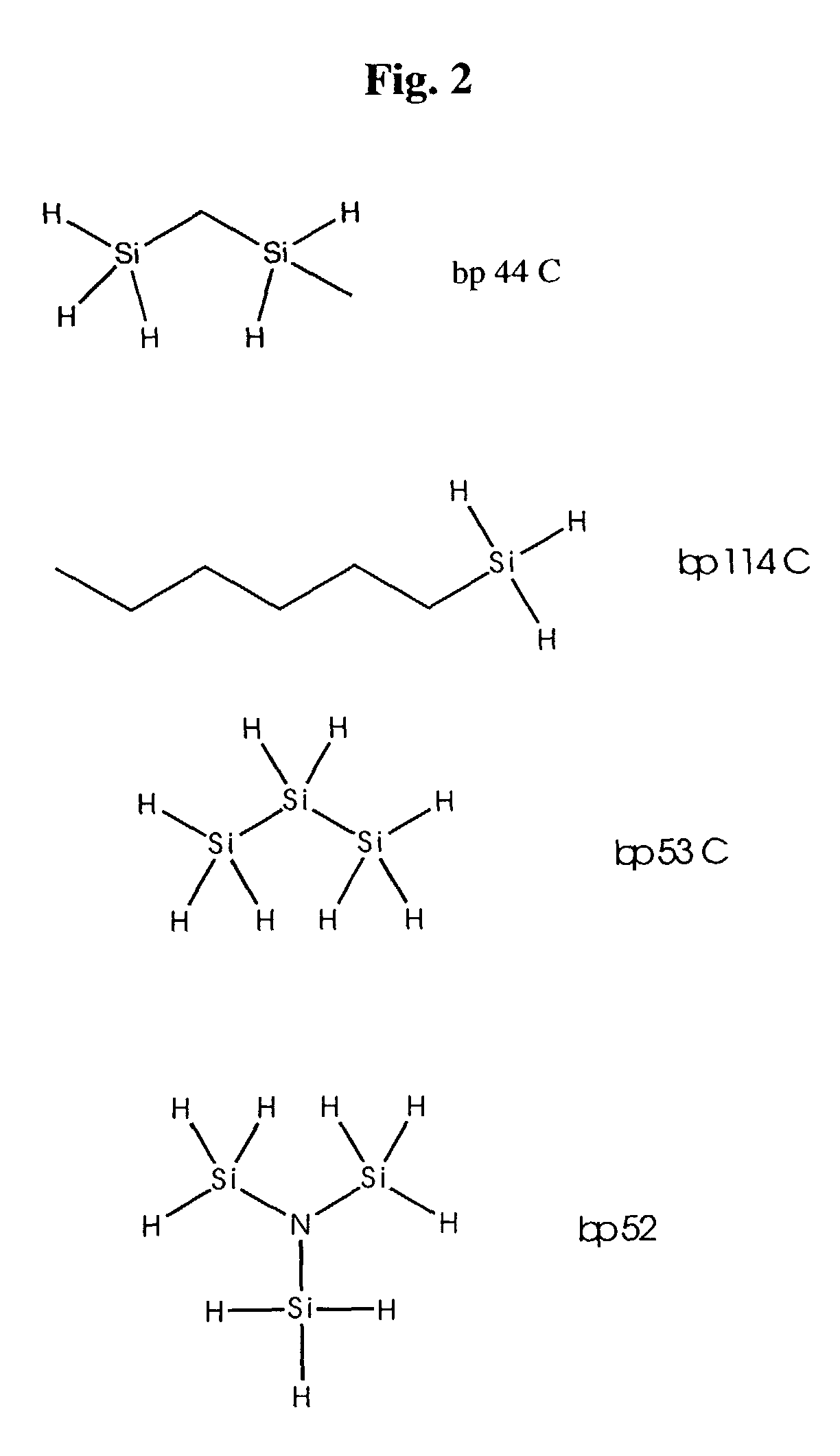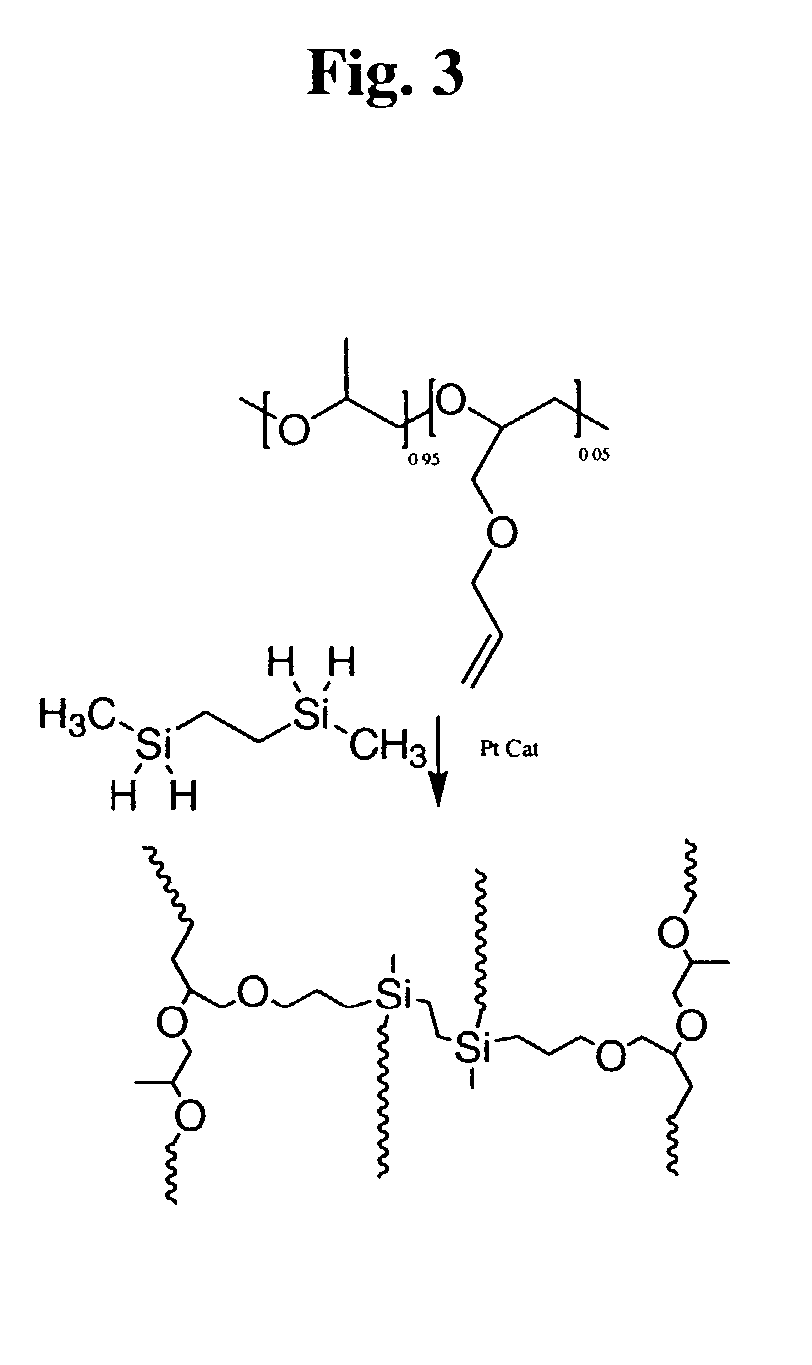Polymeric electrolytes based on hydrosilyation reactions
a technology of hydrosilyation and polymer electrolytes, which is applied in the direction of conductive materials, textiles and paper, coatings without pigments, etc., can solve the problems of polarization and very low li, detriment to transportaton, and the efficiency of rechargeable polymer lithium batteries
- Summary
- Abstract
- Description
- Claims
- Application Information
AI Technical Summary
Benefits of technology
Problems solved by technology
Method used
Image
Examples
example 1
[0082]PAREL™, a commercially available polypropylene oxide (PPO), was obtained from Zeon Chemicals Inc., and has a weight and number average molecular weights of 5×105 and 2.5×105, respectively. This polymer was prepared from a mixture of propylene oxide (95 mole %) and allyl glycidyl ether (5 mole %) by using alkyl aluminum chloride as catalyst. The allyl groups were randomly distributed among polymer chains. To remove additives and the BHT radical inhibitor, the polymer was subjected to Soxhlet extraction with methanol for a week followed by drying at 65° C. using drying pistol in a P2O5 environment under vacuum for another week. LiTFSI was a gift from 3M and dried under vacuum at 180° C. overnight.
[0083]Allylmethacrylate and poly(ethylene glycol)methyl ether methacrylate having an average molecular weight of 300 (PEGDME-300) were purchased from Aldrich and were purified using an inhibitor remover (Aldrich, diposable column) and stored in a freezer. The radical initiator, 2, 2′-Az...
example 2
[0086]For the preparation of a monomer EPE2, Diethylene glycol monomethyl ether (Aldrich, 95%), 50.61 g (0.40 mol), Sodiumhydride (Aldrich, 95%), 12.12 g (0.48 mol), Epichlorohydrin (Aldrich, 99%), 74.02 g (0.80 mol) and THF (B&J, dried with CaH2), 350 ml were used. Two parallel reactions were performed in 500 ml flasks. After the usual work-up, the product was purified by vacuum distillation. About 120 ml EPE2 (95% purity) was collected at ˜50° C. / 50 mtorr. It was then dried with CaH2 overnight and distilled again, yielding ˜100 ml final product. GC (EPE20003.D):purity ˜97%, rt:14.01 min.
[0087]All other epoxide monomers with different number of ethyleneoxide unit, n=3, 4, 5, were prepared in the same Manner. The structure and purity were double checked by GC and NMR spectra.
Preparation of Crosslinkable Comb-branch Polyepoxides
[0088]Poly(2-(2-methoxyethoxy)ethyl glycidyl ether-co-allyl glycidyl ether), PEPE2 with 5% of allyl group. Other polymers with different side-chain length wer...
PUM
| Property | Measurement | Unit |
|---|---|---|
| boiling point | aaaaa | aaaaa |
| boiling point | aaaaa | aaaaa |
| conductivity | aaaaa | aaaaa |
Abstract
Description
Claims
Application Information
 Login to View More
Login to View More - R&D
- Intellectual Property
- Life Sciences
- Materials
- Tech Scout
- Unparalleled Data Quality
- Higher Quality Content
- 60% Fewer Hallucinations
Browse by: Latest US Patents, China's latest patents, Technical Efficacy Thesaurus, Application Domain, Technology Topic, Popular Technical Reports.
© 2025 PatSnap. All rights reserved.Legal|Privacy policy|Modern Slavery Act Transparency Statement|Sitemap|About US| Contact US: help@patsnap.com



